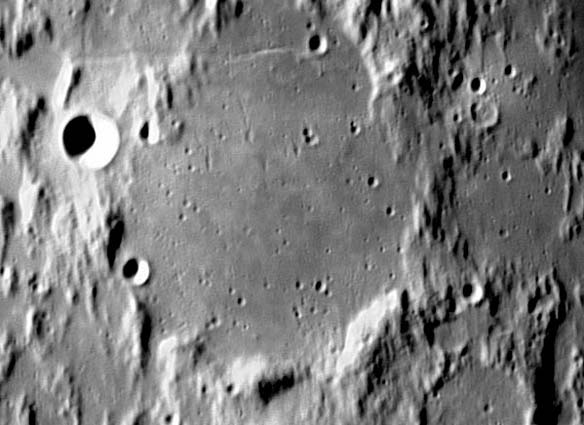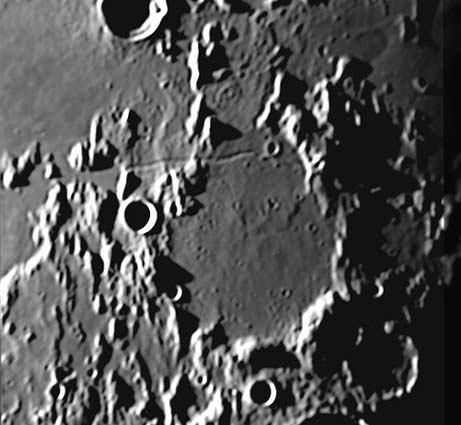Difference between revisions of "August 15, 2004"
| Line 1: | Line 1: | ||
__NOTOC__ | __NOTOC__ | ||
=Flammarion x2= | =Flammarion x2= | ||
| − | |||
<br> | <br> | ||
<table width="85%" border="0" align="center" cellpadding="6" cellspacing="2"> | <table width="85%" border="0" align="center" cellpadding="6" cellspacing="2"> | ||
| − | + | <tr> | |
| − | + | <td> | |
| − | + | </blockquote></td> | |
| − | + | </tr> | |
</table> | </table> | ||
<table width="85%" border="0" align="center" cellpadding="6" cellspacing="2"> | <table width="85%" border="0" align="center" cellpadding="6" cellspacing="2"> | ||
| − | + | <tr> | |
| − | + | <td colspan="2" valign="top"><div align="center"> | |
| − | + | <table width="100%" border="0" cellspacing="2" cellpadding="4"> | |
| − | + | <tr> | |
| − | + | <td>[[File:LPOD-2004-08-15.jpeg|LPOD-2004-08-15.jpeg]]</td> | |
| − | + | <td>[javascript:;" onMouseOver="MM_swapImage('Image2','','images/LPOD-2004-08-15b.jpeg',1)" onMouseOut="MM_swapImgRestore() [[File:LPOD-2004-08-15a.jpeg|LPOD-2004-08-15a.jpeg]]]</td> | |
| − | + | </tr> | |
| − | |||
| − | |||
| − | |||
</table> | </table> | ||
| + | </div> | ||
<table width="80%" border="0" align="center" cellpadding="8"> | <table width="80%" border="0" align="center" cellpadding="8"> | ||
| − | + | <tr> | |
| − | + | <td><div align="center" class="main_sm">Image Credit: [mailto:Bruno.DAVERSIN@lahague.com Bruno Daversin] and [mailto:thefamily90@hotmail.com Jim Phillips]</div></td> | |
| − | + | </tr> | |
</table> | </table> | ||
<br> | <br> | ||
<table class="story" border="0" bgcolor="#FFFFFF" width="90%" cellpadding="10" align="center"><tr><td> | <table class="story" border="0" bgcolor="#FFFFFF" width="90%" cellpadding="10" align="center"><tr><td> | ||
| − | + | <p class="story" align="center"><b> Flammarion x 2</b></p> | |
| − | + | <p class="story" align="left"> | |
This has been a great couple of weeks for lunar photography, with many skilled imagers acquiring wonderful pictures nearly every night of the lunation. Here is a recent pair of Flammarion, an often overlooked and slightly battered crater north of Ptolemaeus. Have you ever knowingly observed Flammarion? Named after [http://www.lpod.org/archive/2004/01/LPOD-2004-01-20.htm Camille Flammarion] the great popularizer of astronomy from the 1880s through the 1920s, this crater has been affected by many of the great events of lunar history. Like nearby Ptolemaeus, it was formed sometime before the formation of the Imbrium basin - this is demonstrated by three signatures of that huge impact. First the area around Flammarion is striated with linear ridges and valleys formed by flying ejecta. Second, large basin secondary craters (Mosting M and the one to its south - see mouseover) pelted the area. And third, the floors of Flammarion, Flammarion T and other old craters are veneered with [http://www.lpod.org/LPOD-2004-07-25.htm Cayley Formation] light plains - assumed to be Imbrium's fluidized ejecta. At some later time a narrow linear rille cut the Cayley along the north edge of Flammarion's floor, but the western end of the rille was subsequently buried by lavas from Sinus Medii. Time passed - maybe two billion years - with small craters forming here and there. Then, when the crater Herschel formed just south the this area, a few apparent secondary crater clusters and elongated pits cut into Flammarion's floor. And finally, so far, the young fresh crater Mosting A was created, spreading a faint nimbus of powdered rocks, visible under a high sun. | This has been a great couple of weeks for lunar photography, with many skilled imagers acquiring wonderful pictures nearly every night of the lunation. Here is a recent pair of Flammarion, an often overlooked and slightly battered crater north of Ptolemaeus. Have you ever knowingly observed Flammarion? Named after [http://www.lpod.org/archive/2004/01/LPOD-2004-01-20.htm Camille Flammarion] the great popularizer of astronomy from the 1880s through the 1920s, this crater has been affected by many of the great events of lunar history. Like nearby Ptolemaeus, it was formed sometime before the formation of the Imbrium basin - this is demonstrated by three signatures of that huge impact. First the area around Flammarion is striated with linear ridges and valleys formed by flying ejecta. Second, large basin secondary craters (Mosting M and the one to its south - see mouseover) pelted the area. And third, the floors of Flammarion, Flammarion T and other old craters are veneered with [http://www.lpod.org/LPOD-2004-07-25.htm Cayley Formation] light plains - assumed to be Imbrium's fluidized ejecta. At some later time a narrow linear rille cut the Cayley along the north edge of Flammarion's floor, but the western end of the rille was subsequently buried by lavas from Sinus Medii. Time passed - maybe two billion years - with small craters forming here and there. Then, when the crater Herschel formed just south the this area, a few apparent secondary crater clusters and elongated pits cut into Flammarion's floor. And finally, so far, the young fresh crater Mosting A was created, spreading a faint nimbus of powdered rocks, visible under a high sun. | ||
| − | + | <blockquote> | |
| − | + | <p align="right"> — [mailto:tychocrater@yahoo.com Chuck Wood ]</p> | |
| − | + | </blockquote> | |
| − | + | <p><b>Technical Details:</b><br> | |
| − | + | Left image: Aug 7, 2004, -3h38, 24" Cassegrain, B&W webcam + infrared filter, 100 raw frames processed.<br> | |
| − | + | Right image: Aug 8, 2004, 9:41 -9:44 UT, TMB 8" F/9, Seeing 8/10</p> | |
| − | + | <p><b>Related Links: </b><br> | |
| − | + | [http://www.lpi.usra.edu/research/lunar_orbiter/bin/info.shtml?286 Lunar Orbiter IV View] <br> | |
| − | + | Rukl Atlas of the Moon Sheet 44</p> | |
| − | + | <p><b>Tomorrow's LPOD:</b> Megadome</p> | |
| − | + | </tr> | |
| − | |||
</table> | </table> | ||
| − | |||
<br> | <br> | ||
| − | |||
<table width="100%" border="0" cellspacing="2" cellpadding="4"> | <table width="100%" border="0" cellspacing="2" cellpadding="4"> | ||
| − | + | <tr> | |
| − | + | <td><hr></td> | |
| − | + | </tr> | |
| − | + | <tr> | |
| − | + | <td><p align="center" class="main_titles"><b>Author & Editor:</b><br> | |
| − | + | [mailto:tychocrater@yahoo.com Charles A. Wood]</p> | |
| − | + | <p align="center" class="main_titles"><b>Technical Consultant:</b><br> | |
| − | + | [mailto:anthony@perseus.gr Anthony Ayiomamitis]</p> | |
| − | + | <p align="center" class="main_titles"><b>A service of:</b><br> | |
| − | + | [http://www.observingthesky.org/ ObservingTheSky.Org]</p> | |
| − | + | <p align="center" class="main_titles"><b>Visit these other PODs:</b> <br> | |
| − | + | [http://antwrp.gsfc.nasa.gov/apod/astropix.html Astronomy] | [http://www.msss.com/ Mars] | [http://epod.usra.edu/ Earth]</p> | |
| − | + | </td> | |
| − | + | </tr> | |
| − | |||
</table> | </table> | ||
| − | |||
<p> </p> | <p> </p> | ||
| − | |||
| − | |||
| − | |||
---- | ---- | ||
===COMMENTS?=== | ===COMMENTS?=== | ||
Click on this icon [[image:PostIcon.jpg]] at the upper right to post a comment. | Click on this icon [[image:PostIcon.jpg]] at the upper right to post a comment. | ||
Revision as of 18:23, 4 January 2015
Flammarion x2
COMMENTS?Click on this icon File:PostIcon.jpg at the upper right to post a comment. | |||||||





